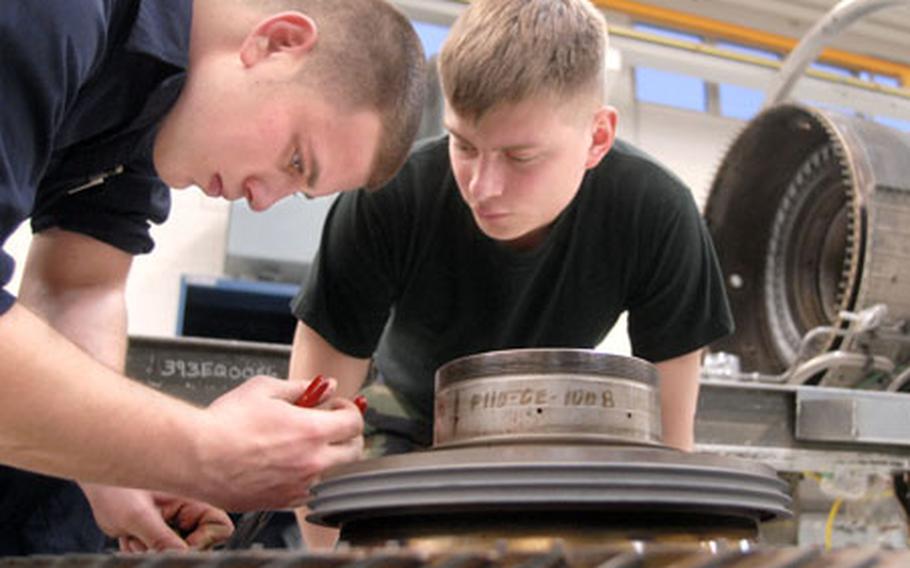News
Air Force looking for ways to do things leaner, smarter
Stars and Stripes January 23, 2007

Airman 1st Class Payton Henley, right, watches as Senior Airman Robert Marcy, a jet engine mechanic assigned to the 52nd Component Maintenance Squadron, removes a defective seal from a high pressure turbine rotor used in an F110 engine Thursday at Spangdahlem Air Base, Germany. (Ben Bloker / Stars and Stripes)
With the Air Force trimming tens of thousands of airmen from its ranks, units in Europe and elsewhere are trying to get smarter and more efficient.
Everything from how long it takes to register a car to the way mechanics repair aircraft is being scrutinized or soon will be looked at as part of a servicewide program called Air Force Smart Operations 21.
The initiative, introduced by Air Force Secretary Michael Wynne last year, is based on business process improvement programs designed to cut waste and boost quality and value in a particular product. The service calls the program “AFSO 21” for short.
To some veteran airmen familiar with the hype and eventual death of business concepts applied to the Air Force in the 1990s, the program might seem like a new name for an old idea.
Chief Master Sgt. Terry Norris, the 52nd Fighter Wing’s Smart Operations 21 program manager, has encountered many who are skeptical of the success of the program.
The Air Force adopted something called Total Quality Management in the 1990s, but the popular business practice didn’t last and became the bane of some commanders and unit leaders.
Lt. Col. Tom Chiavacci, the chief of Smart Operations 21 for U.S. Air Forces in Europe, said Smart Operations 21 takes a different approach and has leadership at the highest levels in support of the program.
“It just sells itself,” Chiavacci said.
Airmen in Europe who do not know or have not heard of Smart Operations 21, soon will. In the next six months, wings across the region are helping train airmen and officers to focus on helping their units do things better.
Some changes have already been made.
For example, tools at the Spangdahlem, Germany-based 52nd Composite Maintenance Squadron have been moved closer to workstations to cut down on the amount of walking by aircraft mechanics.
Before, when they needed a tool, they had to walk across the building to a centralized storage area. It was only a few hundred feet, but mechanics walked back and forth from their jet engine to the tool cage so often that a study found they walked nearly 1.5 miles during a typical workday.
Airmen complained for years about the senselessness, but rules required the tools to be secured in a single area. When a waiver was approved by commanders, the tools were moved.
The unit also streamlined its repair shop to an assembly line-type of process to get engines in and out faster.
Changes made in how the shop does business have allowed the squadron to increase its production by 58 percent, if needed, said Senior Master Sgt. Wayne Stephens, the squadron’s propulsion flight superintendent.